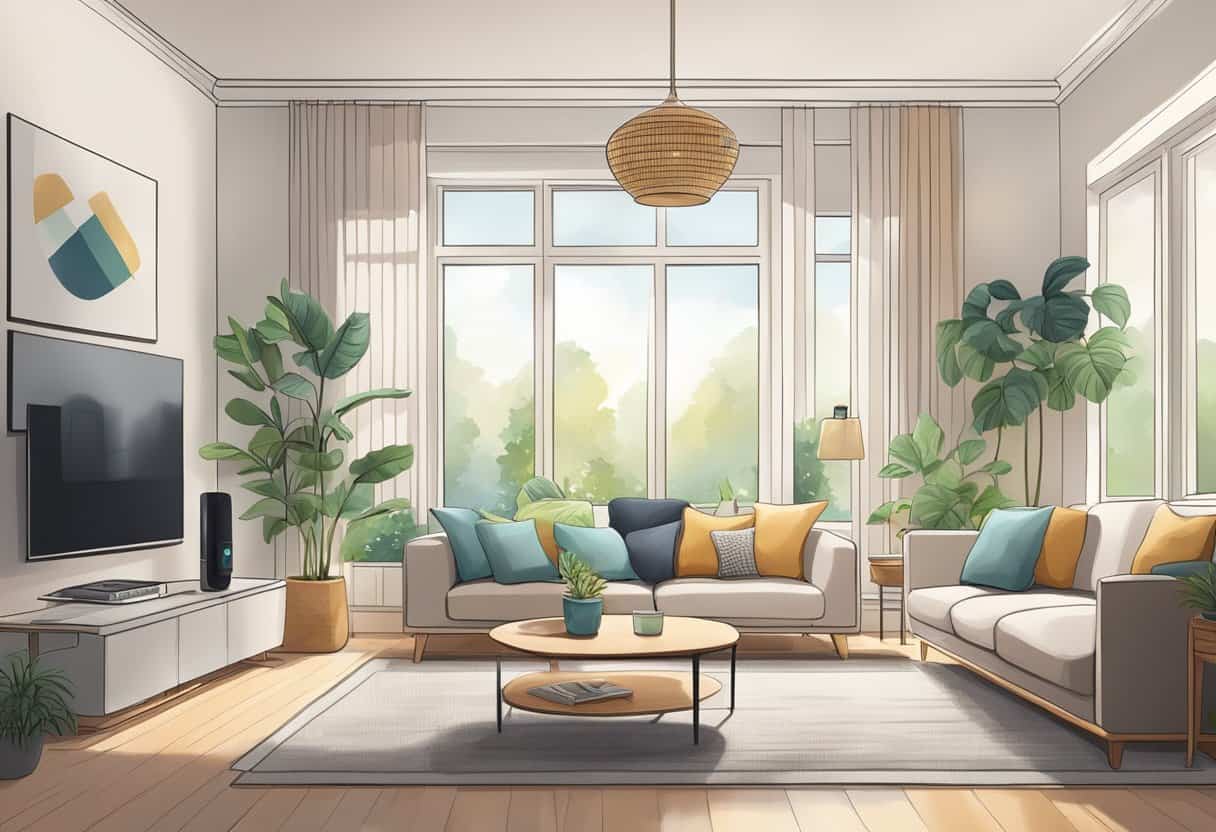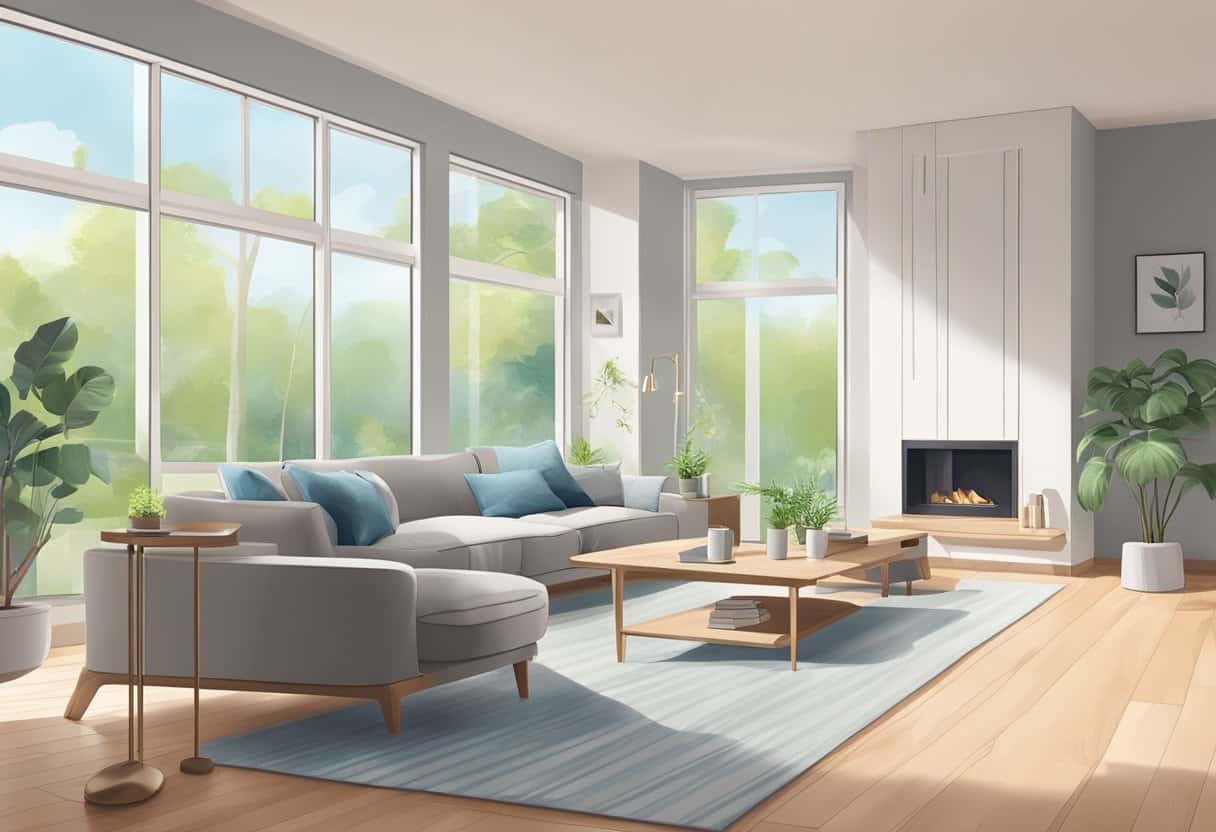Air purifiers have become essential tools in improving indoor air quality, especially considering the increasing concern over pollution and allergens that pervade our living spaces.
By removing contaminants such as dust, pollen, and smoke from the air, these devices can play a significant role in enhancing the respiratory health and overall well-being of individuals. Whether you live in an urban environment where smog and vehicle emissions are common or in an area prone to seasonal allergies, an air purifier can offer a significant improvement to the air you breathe every day.
Incorporating an air purifier into your home environment can also provide relief from symptoms associated with asthma and allergies by capturing airborne particles that irritate the respiratory system. The various types of filters used in air purifiers, including HEPA filters, are specifically designed to tackle different pollutants, each offering a layer of defense against various forms of indoor air pollution.
With the capability to reduce the presence of harmful particulate matter, an air purifier can be a vital component in maintaining a healthy indoor atmosphere, contributing not only to physical health but also to comfort and peace of mind.
Air purifiers enhance indoor air quality by filtering out pollutants like dust, pollen, and smoke, benefiting respiratory health and comfort. They use HEPA and activated carbon filters to tackle various contaminants, making them essential for urban areas and allergy sufferers.
Understanding Air Purifiers and Their Components
When considering the purchase of an air purifier, it’s essential to understand the different components that contribute to its functionality. Each part has a specific role in cleaning the air in your environment.
HEPA Filter Mechanics
HEPA filters, or High Efficiency Particulate Air filters, are a crucial component in most air purifiers. These filters operate by trapping pollutants and particles that are as small as 0.3 microns with a 99.97% efficiency. The dense mesh of fibers in HEPA filters captures particles through a combination of mechanisms including inertial impaction, diffusion, and interception.
Activated Carbon Filters
While HEPA filters tackle particulates, activated carbon filters work on odors and gases. These filters contain a form of carbon processed to have small, low-volume pores increasing the surface area for adsorption or chemical reactions. Your air purifier might utilize this layer to effectively remove volatile organic compounds (VOCs), smoke, and odors, enhancing the quality of the air you breathe.
UV Light Air Purifiers
UV light air purifiers use ultraviolet light to cleanse the air. The UV-C light, specifically, can inactivate airborne pathogens and microorganisms like mold, bacteria, and viruses. It’s important to note that the effectiveness of UV light air purifiers can depend on the microorganism’s exposure time to the UV-C radiation, and this component is often used in conjunction with other filters rather than in isolation.
Health Benefits of Air Purifiers
Air purifiers play a crucial role in enhancing your respiratory health by removing various airborne pollutants. They are particularly beneficial for individuals with asthma or allergies and can reduce the transmission of respiratory infections.
Controlling Asthma and Allergy Triggers
If you suffer from asthma or allergies, air purifiers can be a game-changer. These devices work to filter out common triggers such as pollen, dust, pet dander, and mold spores from the indoor air. The Environmental Protection Agency (EPA) acknowledges the importance of controlling airborne allergens to improve respiratory health. A study demonstrated that using a high-efficiency particulate air (HEPA) filter can positively impact health outcomes in homes of children with allergic diseases, emphasizing the potential benefit for both children and the elderly.
Reducing Potential for Respiratory Infections
Your risk of respiratory infections can be mitigated with the strategic use of air purifiers. They are designed to reduce the concentration of bacteria and viruses in the air. With cleaner air, you’re less likely to inhale infectious agents. Research has shown benefits including the reduction of particulate matter and chemical components like PAHs, heavy metals, and ions in the indoor environment of a university dormitory setting. While completely eliminating the risk of respiratory infections is not possible, air purifiers can contribute to a safer environment, especially for individuals with preexisting respiratory problems.
Improving Indoor Air Quality and Comfort

Maintaining a balance between clean air and comfortable living spaces is crucial. High-quality air purifiers efficiently reduce indoor air pollution, composed of various pollutants including smoke, pet dander, and volatile organic compounds (VOCs). This leads to healthier environments that can enhance overall wellbeing and comfort in your home.
Neutralizing Unpleasant Odors
An air purifier equipped with activated carbon filters can effectively neutralize unpleasant odors. Whether it’s from cooking, pets, or cigarettes, these odors can be a nuisance. VOCs, which include a variety of chemicals, often have strong scents and potentially adverse health effects. The carbon in the filters adsorbs these odors and VOCs, leading to fresher indoor air and a more pleasant living environment for you.
Enhancing Sleep Quality
The presence of indoor air pollutants can greatly impact your sleep quality. Breathing clean air is vital for a good night’s rest. Smoke and pet dander, for instance, can trigger allergies or asthma symptoms that disrupt sleep. An air purifier works to remove such particles from the air, which may lead to an improvement in sleep quality due to the reduction of potential irritants that could prevent you from sleeping soundly.
Additional Considerations for Air Purifier Efficacy
When selecting and using an air purifier, it’s critical to consider factors that influence its performance as well as strategies to optimize its use for maximal effectiveness in reducing indoor pollutants.
Factors Affecting Air Purifier Performance
The Clean Air Delivery Rate (CADR) represents the volume of filtered air an air purifier delivers, with higher values indicating more efficient pollutant removal. CADR ratings are particularly important when considering the removal of particulate matter, such as pollen, dust, and smoke particles.
The efficacy of portable air purifiers depends significantly on their filter efficiency. High-Efficiency Particulate Air (HEPA) filters are renowned for capturing fine particles effectively. Yet, the presence of gases like carbon monoxide or volatile organic compounds may require an air purifier with an additional activated carbon filter to adsorb these pollutants.
The size and ventilation of the room also play a crucial role in an air purifier’s performance. An air purifier with a CADR rating suitable for the room’s volume will more effectively cycle and clean the air, leading to reduced levels of indoor pollutants.
Optimizing Air Purifier Usage
To maximize an air purifier’s capability, it’s essential to strategically place your device. Positioning a portable air purifier in areas with high pollution concentration, away from walls and obstructions, facilitates better air circulation.
Regular maintenance, such as cleaning and replacing filters as instructed by the manufacturer, is necessary to ensure your air purifier operates at peak performance. Neglecting maintenance can significantly diminish the purifier’s ability to clean the air, decreasing the CADR and allowing indoor pollutants to accumulate.
Remember, while an air purifier can considerably reduce airborne contaminants, it should be part of a broader strategy to maintain indoor air quality, including reducing pollutant sources and ensuring good ventilation.
Frequently Asked Questions
In this section, we address common inquiries about air purifiers to help you understand their benefits and considerations in your home environment.
How do air purifiers improve indoor air quality?
Air purifiers work by filtering out pollutants, allergens, and fine particles like PM2.5, which can harm your health. They can effectively reduce particulate matter in the air, contributing to a cleaner indoor atmosphere.
Can using an air purifier reduce allergy symptoms?
Yes, using air purifiers can alleviate allergy symptoms by removing common allergens such as pollen, dust mites, and pet dander from your indoor environment. Studies have shown improvements in perceived air quality and reductions in particulate matter with air purifier use.
What are the potential disadvantages of using an air purifier?
While air purifiers are beneficial, there are potential disadvantages, such as the cost of replacement filters and energy usage. Moreover, not all air purifiers are created equal, and some may not be effective against certain types of pollutants.
Is it beneficial to use an air purifier in the bedroom while sleeping?
Utilizing an air purifier in the bedroom can enhance your sleep quality by maintaining cleaner air and reducing allergens that may cause nighttime allergies or respiratory issues.
How does an air purifier contribute to skin health?
Clean air can have a positive impact on your skin health by reducing the exposure to pollutants that can cause skin irritation and premature aging.
Should families with babies consider getting an air purifier, and why?
Families with babies should consider an air purifier as it can create a cleaner and healthier environment for infants who are more vulnerable to airborne pollutants, potentially reducing the risk of respiratory issues.







